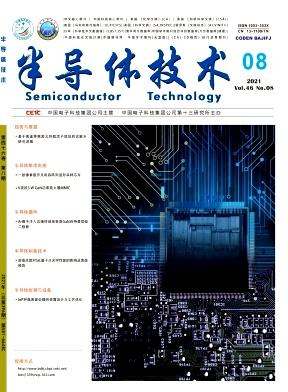Ultra-dilute silicon wafer clean chemistry for fabrication of RF microwave devices
引用次数: 0
Abstract
An ultra-dilute clean chemistry was successfully employed for effective removal of both surface haze and submicron particulate contamination from silicon wafer substrates. The cleaning chemistry was ultra-dilute RCA-SC1 followed by RCA-SC2 solutions. All chemical cleaning and deionized water (DI) rinsing steps were performed in the same processing vessel. The drying vessel was a "motionless" system. The chemical cleaning, DI water rinsing and drying processes were carried out at an ambient temperature. A laser beam scanning system was employed to directly measure surface haze concentration and light point defects (LPD's) density at or above 0.5-/spl mu/m particle size. Ultra-dilute clean chemistry has been in active use for various manufacturing processes including prebonding, pre-diffusion/oxidation, preepitaxial deposition, post-lasermark, post-chemical mechanical polishing (CMP) cleaning operations. The manufacturing data in terms of particle removal efficiency are discussed The electrical data for total oxide surface charge, density of interface traps, as well as regeneration lifetime are also presented in this paper. A key advantage of this ultra-dilute cleaning system over a conventional wet bench is an approximate 3-fold reduction in the volume of chemical usage. The net cost saving for chemicals including DI water is estimated at $2.32 for each 25-wafers product lot. In addition, an approximate 8-fold reduction could be realized in the wastewater loading. Therefore, this ultra-dilute cleaning operation is both environmental friendly and cost effective.用于射频微波器件制造的超稀硅片清洁化学
采用超稀清洁化学方法,成功地去除了硅片衬底表面的雾霾和亚微米颗粒污染。清洗化学成分为超稀RCA-SC1,然后是RCA-SC2溶液。所有化学清洗和去离子水(DI)冲洗步骤在同一处理容器中进行。干燥容器是一个“不动”的系统。化学清洗、去离子水冲洗和干燥过程在常温下进行。采用激光束扫描系统直接测量粒径在0.5-/spl μ m以上的表面雾霾浓度和光点缺陷(LPD’s)密度。超稀清洁化学已被积极用于各种制造工艺,包括预粘合,预扩散/氧化,预外延沉积,后激光标记,后化学机械抛光(CMP)清洗操作。讨论了微粒去除效率方面的制造数据,并给出了氧化物表面总电荷、界面陷阱密度和再生寿命方面的电学数据。与传统湿式工作台相比,这种超稀清洗系统的一个关键优势是化学品使用量减少了大约3倍。包括去水在内的化学品的净成本节约估计为每批25片产品2.32美元。此外,废水负荷可减少约8倍。因此,这种超稀清洗操作既环保又具有成本效益。
本文章由计算机程序翻译,如有差异,请以英文原文为准。
求助全文
约1分钟内获得全文
求助全文

 求助内容:
求助内容: 应助结果提醒方式:
应助结果提醒方式:


